Progression of skin lesions from normal skin to squamous cell carcinoma
- PMID: 19320189
- PMCID: PMC4061044
Progression of skin lesions from normal skin to squamous cell carcinoma
Abstract
Objective: To assess the changes in the nuclear chromatin pattern concomitant with progressive sun damage in skin biopsies ranging from sun-exposed, normal-appearing skin to squamous cell carcinoma (SCC).
Study design: Biopsies were taken from 140 cases with sun-exposed but histopathologically normal skin, from 20 cases visually assessed as pre-actinic keratosis (pre-AK) or early AK, from 30 cases of AK, and from 21 cases of SCC. A total of 21,094 nuclei were recorded from these biopsies. High-resolution digital imagery was recorded, and features descriptive of the nuclear chromatin pattern were computed. Both supervised learning and unsupervised learning algorithms were employed to derive progression plots.
Results: With increased sun exposure, the proportion of nuclei exhibiting changes in the nuclear chromatin pattern rises notably. Using karyometry, no significant differences could be substantiated between nuclei collected from early AK sites and AK lesions. Cases of SCC fell into 2 distinct groups. A larger group (approximately 66.7% of cases) had characteristics similar to AK. A smaller group (approximately 33.3% of cases) represented much more progressed lesions.
Conclusion: Karyometric assessment can provide a numeric measure of progression for sun damage and of the deviation from normal in both AK and SCC lesions.
Figures

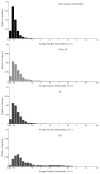

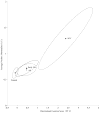
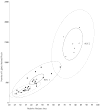
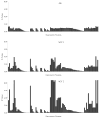

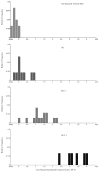

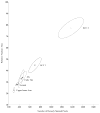
Similar articles
-
Karyometry of nuclei from actinic keratosis and squamous cell cancer of the skin.Anal Quant Cytol Histol. 2003 Dec;25(6):353-61. Anal Quant Cytol Histol. 2003. PMID: 14714302
-
Progression of actinic keratosis to squamous cell carcinoma revisited: clinical and treatment implications.Cutis. 2011 Apr;87(4):201-7. Cutis. 2011. PMID: 21644496 Review.
-
Karyometric analysis of actinic damage in unexposed and sun-exposed skin and in actinic keratoses in untreated individuals.Anal Quant Cytol Histol. 2004 Jun;26(3):155-65. Anal Quant Cytol Histol. 2004. PMID: 15218692 Clinical Trial.
-
[Beyond actinic keratoses: Field cancerization of the skin].Ann Dermatol Venereol. 2018 Oct;145(10):587-592. doi: 10.1016/j.annder.2018.06.009. Epub 2018 Sep 20. Ann Dermatol Venereol. 2018. PMID: 30243819 French.
-
Actinic keratosis metrics.Arch Dermatol Res. 2024 Aug 20;316(8):543. doi: 10.1007/s00403-024-03305-5. Arch Dermatol Res. 2024. PMID: 39162820 Free PMC article. Review.
Cited by
-
Karyometry in atypical endometrial hyperplasia: a Gynecologic Oncology Group study.Gynecol Oncol. 2012 Apr;125(1):129-35. doi: 10.1016/j.ygyno.2011.12.422. Epub 2011 Dec 9. Gynecol Oncol. 2012. PMID: 22155796 Free PMC article. Clinical Trial.
-
Evaluating IPMN and pancreatic carcinoma utilizing quantitative histopathology.Cancer Med. 2016 Oct;5(10):2841-2847. doi: 10.1002/cam4.923. Epub 2016 Sep 26. Cancer Med. 2016. PMID: 27666740 Free PMC article.
-
Cancer Immunoprevention: Current Status and Future Directions.Arch Immunol Ther Exp (Warsz). 2021 Feb 27;69(1):3. doi: 10.1007/s00005-021-00604-x. Arch Immunol Ther Exp (Warsz). 2021. PMID: 33638703 Review.
-
Nuclear morphometry identifies a distinct aggressive cellular phenotype in cutaneous squamous cell carcinoma.Cancer Prev Res (Phila). 2011 Nov;4(11):1770-7. doi: 10.1158/1940-6207.CAPR-10-0404. Epub 2011 Jun 2. Cancer Prev Res (Phila). 2011. PMID: 21636541 Free PMC article.
-
Sea-Buckthorn Seed Oil Induces Proliferation of both Normal and Dysplastic Keratinocytes in Basal Conditions and under UVA Irradiation.J Pers Med. 2021 Apr 7;11(4):278. doi: 10.3390/jpm11040278. J Pers Med. 2021. PMID: 33917064 Free PMC article.
References
-
- Marks R. The role of treatment of actinic keratoses in the prevention of morbidity and mortality due to squamous cell carcinoma. Arch Dermatol. 1991;127:1031–3. - PubMed
-
- Marks R. Solar keratoses. Br J Dermatol. 1990;122(Suppl 35):49–54. - PubMed
-
- Barnaby JW, Styles AR, Cockerell CJ. Actinic keratoses. Differential diagnosis and treatment. Drugs Aging. 1997;11:186–205. - PubMed
-
- Dinehart SM, Nelson-Adesokan P, Cockerell C, Russell S, Brown R. Metastatic cutaneous squamous cell carcinoma derived from actinic keratosis. Cancer. 1997;79:920–3. - PubMed
-
- Preston DS, Stern RS. Nonmelanoma cancers of the skin. N Engl J Med. 1992;327:1649–62. - PubMed
Publication types
MeSH terms
Substances
Grants and funding
LinkOut - more resources
Full Text Sources
Other Literature Sources
Medical
Research Materials
